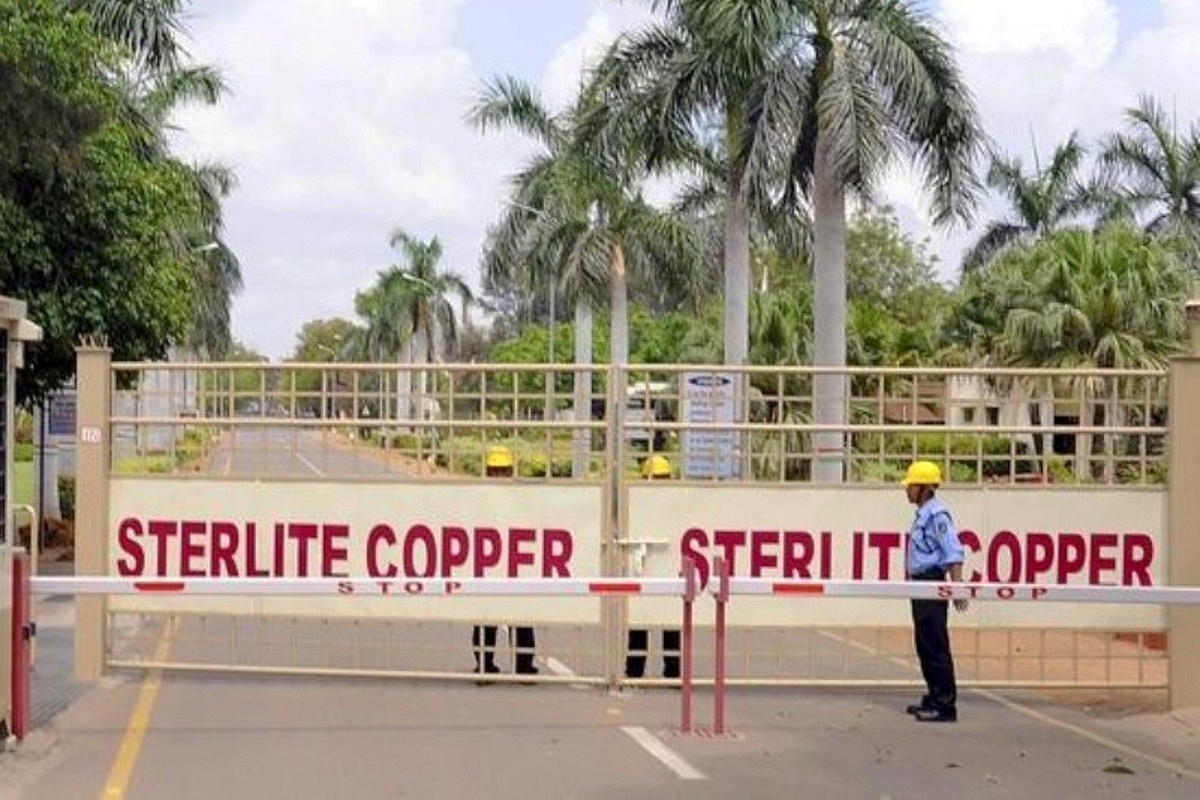Infrastructure
From Disaster In Thoothukudi To Resurgence In Kachchh: India's Copper Story Turns 180 Degrees
- Adani's new world's largest plant will invoke a positive sentiment in the copper sector to meet India's growing demand

Sterlite Copper Plant in Thoothukudi
Five years after the disastrous shutdown of the Sterlite Copper plant in Thoothukudi, India’s copper production is set to witness a remarkable uptick. The resurgence is being led by Adani Group’s latest making biggest ever inroad into copper production.
India will soon boast the world's largest copper manufacturing plant. Kutch Copper Ltd (KCL), a subsidiary of Adani Enterprises Ltd is establishing a facility at Mundra in Gujarat. The plant costing $1.2 billion will start its operations by the end of March this year.
In its first phase, it will produce 0.5 million tonnes of copper, which will be increased to 1 million tonnes during the second phase commencing in March 2029.
The plant will majorly provide feeder services to Adani’s multiple ventures in green energy, renewables and infrastructure. "Adani wants to become a global leader in the copper business, leveraging the Adani Group's strong position in resource trading, logistics, renewable power, and infrastructure," said a source quoted by PTI
Shutdown of Sterlite plant
Before the shutdown of the Sterlite plant in Thoothukudi, India used to be a net exporter of copper. Despite having only 2 per cent of global copper reserves, India’s share in refined copper production was 4 per cent.
In Financial Year (FY) 2018, India exported 398 kilo tonnes (kt) of copper cathode, an uptick of 12.3 per cent compared to FY2017.
The bulk of India’s copper production was centered at the sterlite plant, which produced around 40 per cent of India’s copper. After Vedanta launched the expansion project, protests demanding a shutdown of the plant began in February 2018.
Some vested anti-development interest groups are said to have provoked the local population against the project. Over the next 3 months, multiple protests were systematically organised against the plan. On 22 May 2018, 20,000 protesters turned violent, leading to lathi-charge and shooting by the local police.
The fracas resulted in the unfortunate death of 14 people. Later that month, the Tamil Nadu government ordered permanent closure of the sterlite plant.
Impact of shutdown
The closure resulted in a devastating impact on India’s copper production capacity. At a time when India needed more localised copper production, the shutdown resulted in India’s refined copper production dropping from 830,000 tonnes in FY2018, to 450,000 tonnes in FY2019.
The after-effects of the shutdown made India a net importer of copper within a span of a few months. India’s exports dropped from 3.78 lakh tonnes in FY2018 to 47,917 tonnes.
It has been on a gradual decline since then, recording a low of 30,000 tonnes in FY2023. On the contrary, India’s imports increased from 44,245 tonnes in FY2018 to 92,290 tonnes in FY2019.
In FY2023, the corresponding figure was a humongous 181,000 tonnes, despite India’s production clocking 555,000 tonnes, the highest production volume of the last 5 years. It resulted in industries sending Rs 11,636 crore more for availing copper, cascading effects of which are ultimately borne by the last mile consumer.
Importance of Copper in economy
The shutdown came at possibly the worst turn in India’s industrial history. Copper is the third most used metal in India. It is used in sectors like green energy, defence, manufacturing, and infrastructure - crucial domains for India’s sojourn from transitioning to developed nation status.
Nearly 40 per cent of copper is consumed by the infrastructure and construction sector, which is anticipated to increase further in the upcoming decade.
Additionally, the ambitious goal of having 500 GW of renewable energy capacity by 2030 is leading to an exponential increase in demand for copper. Compared to conventional cars demanding 9 to 22 kilograms (kg) of copper, a hybrid EV consumes around 38kg.
Similarly, compared to power generated from natural gas and coal, solar and offshore wind projects require two times and five times more copper respectively.
According to International Copper Association India, India’s copper demand is set to touch 2.8 million tonnes by the end of 2030. But India could again become a copper surplus nation in the next few years.
Gautam Adani’s entry into space has come at the right juncture for India. Currently, the country's biggest copper plant with a capacity of 500,000 tonnes is operated by Hindalco Industries Ltd. Vedanta is also looking for ways to reopen Sterlite copper plants.
With the rise in demand and positive sentiments accruing from Adani Group’s entry, India is looking forward to a sharp uptick in copper production.
Support Swarajya's 50 Ground Reports Project & Sponsor A Story
Every general election Swarajya does a 50 ground reports project.
Aimed only at serious readers and those who appreciate the nuances of political undercurrents, the project provides a sense of India's electoral landscape. As you know, these reports are produced after considerable investment of travel, time and effort on the ground.
This time too we've kicked off the project in style and have covered over 30 constituencies already. If you're someone who appreciates such work and have enjoyed our coverage please consider sponsoring a ground report for just Rs 2999 to Rs 19,999 - it goes a long way in helping us produce more quality reportage.
You can also back this project by becoming a subscriber for as little as Rs 999 - so do click on this links and choose a plan that suits you and back us.
Click below to contribute.
Latest